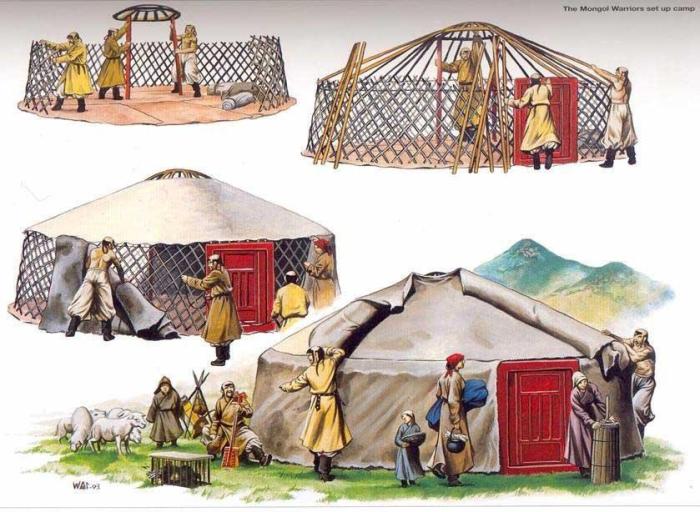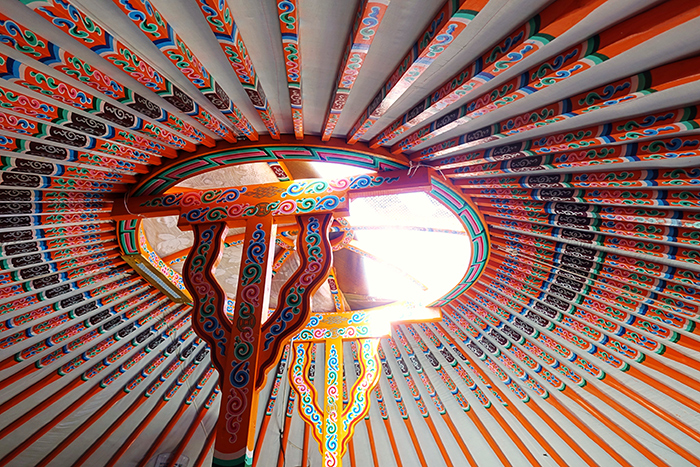
Ger, Mongolian Traditional Dwelling
Ideally suited to Mongolia's harsh terrain and lifestyle, the ger is called yurt by many foreigners. But, Mongolians don't particularly like this Russian labeling of their national dwelling ...so call it a ger. A round felt tent covered in durable, waterproof, white canvas seems to be the most simple description of this portable home. White modern and expensive houses are being built in UB, many rural Mongolians have retained their traditional lifestyle, of which the ger is an integral part.
Ancient gers were not collapsible and had to be wheeled from one location to the next sometimes pulled by up to 22 yaks. But nomads need to move across the country in all four seasons. So gers that could be packed onto the back of their livestock were designed and are still used.
The Mongolian ger has to key components: the wooden framework and the felt cover, the wooden framework is known as khana, the central support columns as uni, the smoke hole is toono. Eighty - eight separate wooden poles each measuring around 1,5 meters are used for the ger frame, with just to central columns supporting the entire structure. Without its felt and canvas covering the naked frame looks something like an umbrella without its sheath. Once the framework has been erected it is covered with felt and mounted onto a wooden floor sometimes the ger goes directly on the ground and then overlaid with feeling. The door is always on the southern side facing the sun, providing more light inside the windowless home.

Your average ger is divided into three areas. There are male and female sections and khoimor area at the rear of the ger. The male area is on the western or left side of the ger. Here is man keeps his bridles, airag and arkhi (vodka). Women traditionally have the eastern side of a ger, where they keep kichen utensils, their own and childrens belongings. It is customary for a man entering a ger to step the western side and women to the east. The khoimer, which is directly opposite the door, is where valuable objects are stored or displayed, as well as a small Buddhist shrine. Most families also keep a collage of photographs of relatives and close friends at the back of the ger. This is the most important part of the ger and guests are often invited to sit at the khoimer.

The two central columns are the only things propping up the whole structure and no matter how many people are in ger ( you would be amazed how many can fit in and even sleep in a ger), no one ever leans against either of the support columns. This is considered very bad form. It's around shape keeps the Ger.
Resilient to Mongolia 's ferocious winds, while it felt is rapidly drying material for when it rains or snow melts. In UB and more recently, in towns across the country, people are setting into large, faceless apartment blocks. Ger districts usually occupy poor quality land on the outskirts of town. But in summer, urban Mongolians head to the outskirts where they spend as much time as possible in small wooden houses or gers where they can enjoy the beautiful Mongolian summers away from the uncomfortably hot urban apartments.













